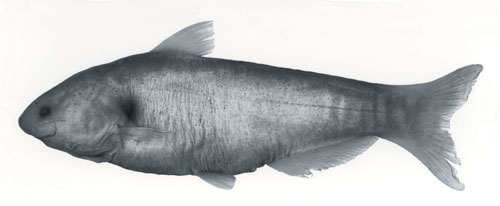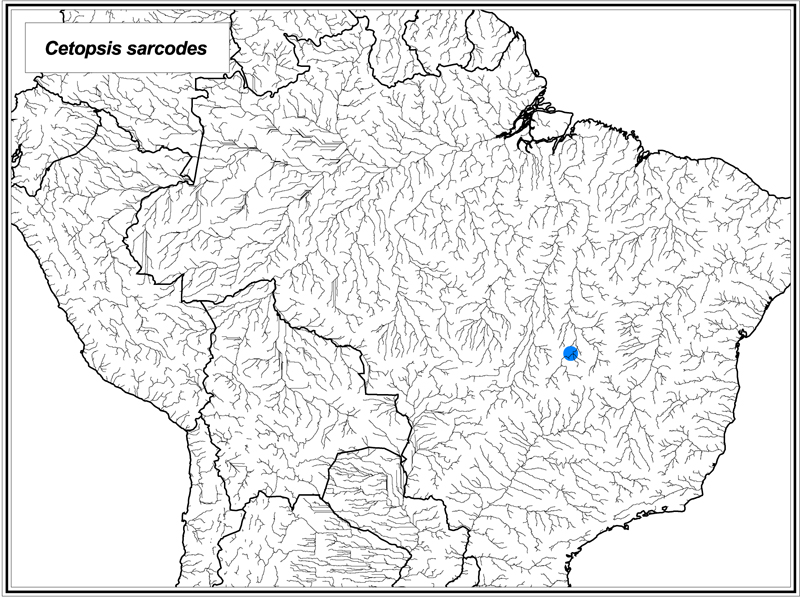
Reproduced from Vari, Ferraris and de Pinna (2005).
Cetopsis sarcodes Vari, Ferraris & de Pinna, 2005
Identification: Cetopsis sarcodes can be distinguished from all of its congeners by the combination of the presence of an eye, the conical teeth on the vomer and the dentary, the rounded posterior nares which is distinctly separated from the contralateral nares by a distance greater than the width of the posterior nares, the presence of a humeral spot, the lack of a pattern of dark pigmentation across the pectoral and pelvic fins other than for a thin clear margin on each fin, the absence of distinct dark pigmentation on the anal and caudal fins particularly on the distal portions of those fins, and the possession of 21 branched anal-fin rays, 28 caudal vertebrae, 43 total vertebrae, 25 total anal-fin rays, and 9 pectoral-fin rays. Maximum size: 69 mm SL.
Range: Cetopsis sarcodes is known only from the type locality in the Rio Tocantins basin of eastern Brazil.
Information from Vari, R. P., C. J. Ferraris Jr. & M. C. C. de Pinna. 2005. The Neotropical whale catfishes (Siluriformes: Cetopsidae: Cetopsinae), a revisionary study. Neotropical Ichthyology 3:127-238.
